
- Shandong Loyal Industrial Co.,Ltd.
- Macaroni Production Machine Instant Noodle Machine Biscuit Making Machine
Home> Company News> Everything you need to know about breakfast cereal machine In 2024

Everything you need to know about breakfast cereal machine In 2024
2024-04-17 16:16:50Introduction to Breakfast Cereal Machines
As we delve into the intricate world of breakfast cereal machines, it becomes evident that these marvels of engineering play a pivotal role in the food industry. Breakfast cereal machines are the backbone of cereal production, facilitating the transformation of raw ingredients into the crispy, flavorful breakfast staples that adorn our tables each morning.
These machines come in various shapes and sizes, each tailored to meet specific production requirements. From extrusion-based machines that shape cereals into familiar forms like flakes and loops, to toasting machines that add the perfect crunch, breakfast cereal machines encompass a diverse array of technologies and functionalities.
At their core, breakfast cereal machines operate on fundamental principles of processing and manufacturing. They carefully control parameters such as temperature, pressure, and moisture content to ensure consistent product quality and safety. Whether it's the gentle rolling of grains to form flakes or the precise toasting of finished products, these machines execute each step with precision and efficiency.
In the competitive landscape of the food industry, breakfast cereal machines are invaluable assets, driving innovation and enabling manufacturers to meet the ever-evolving demands of consumers. As we navigate through the intricacies of these machines, we gain a deeper appreciation for their ingenuity and the vital role they play in shaping the breakfast cereals we know and love.
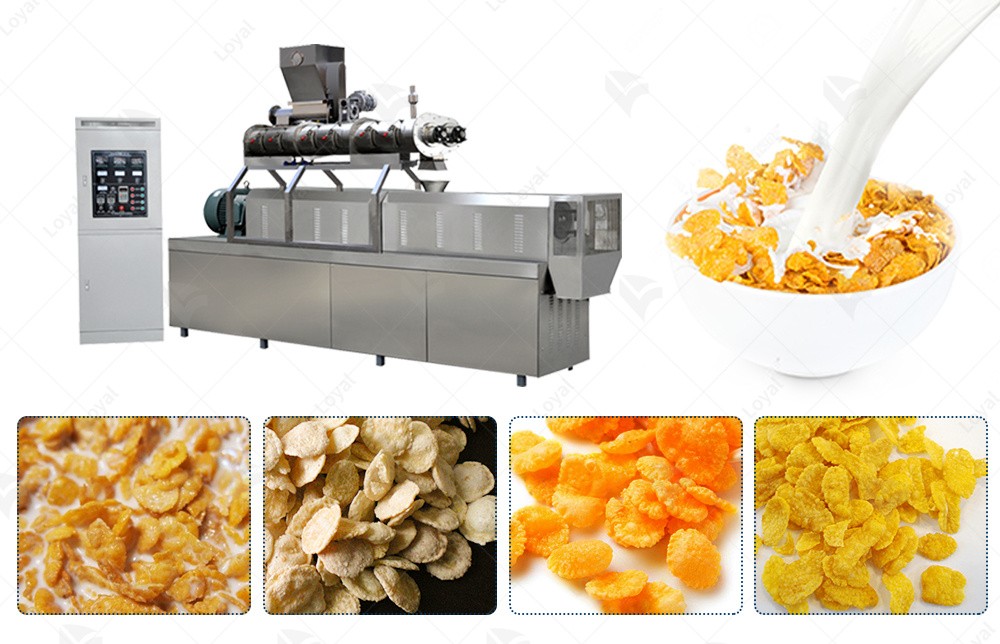
Explanation of the key components and functionality of a breakfast cereal machine
|
Component |
Functionality |
|
Extruder |
The extruder is the heart of the breakfast cereal machine, responsible for cooking and shaping the cereal mixture. It applies heat, pressure, and mechanical shear to the ingredients, transforming them into the desired cereal shapes. |
|
Die and Cutter Assembly |
This component consists of a die and cutter system, which shapes the cooked cereal mixture into specific shapes, such as flakes, loops, or spheres. The die determines the shape, while the cutter trims the extruded product to the desired length. |
|
Drying Oven |
After shaping, the cereal pieces are conveyed through a drying oven to reduce moisture content and achieve the desired texture and crispness. The oven uses controlled heat and airflow to evenly dry the cereal pieces without overcooking or burning them. |
|
Coating System |
Some breakfast cereal machines include a coating system for applying flavorings, vitamins, or sweeteners to the cereal pieces. This system typically consists of spraying nozzles or tumbling drums that evenly distribute the coating ingredients onto the cereal surface. |
|
Control Panel |
The control panel houses the machine's electronic controls and user interface, allowing operators to monitor and adjust process parameters such as temperature, speed, and airflow. It provides real-time feedback and enables precise control over the production process. |
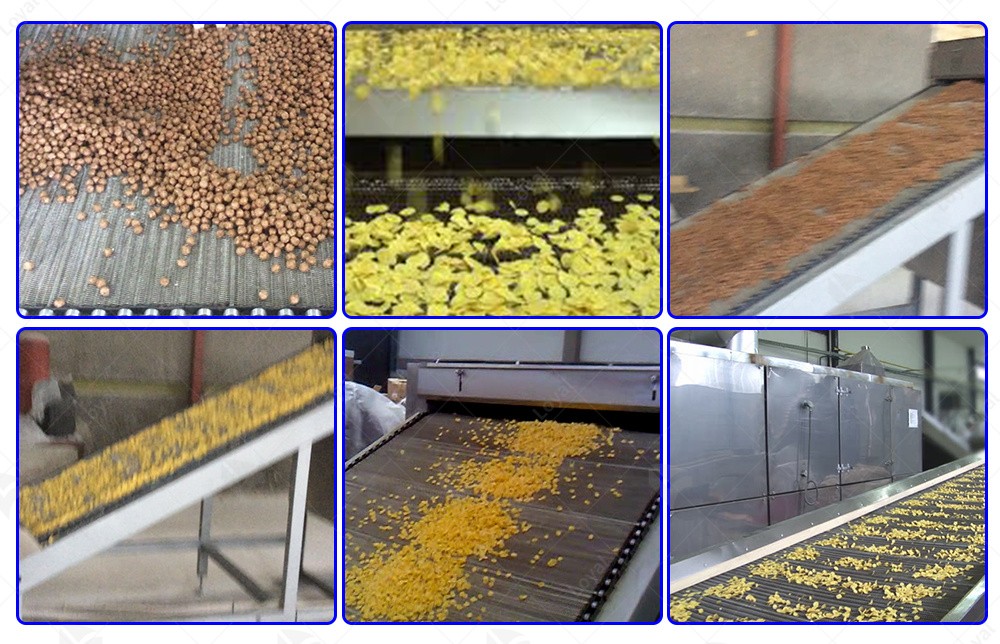
Advantages of Breakfast Cereal Machine
In the realm of industrial food processing, the advent of breakfast cereal machines has revolutionized the production of breakfast cereals. These machines offer a multitude of advantages, catering to the needs of both manufacturers and consumers alike.
1. Efficiency and Productivity
Breakfast cereal machines are designed with efficiency in mind. Their automated processes streamline production, reducing the need for manual labor and minimizing the margin of error. With precise control over various parameters such as temperature, pressure, and mixing ratios, these machines ensure consistent quality output at a rapid pace. Manufacturers can significantly increase their productivity while maintaining high standards of product uniformity.
2. Versatility and Customization
One of the key advantages of breakfast cereal machines is their versatility. They are capable of producing a wide range of cereal varieties, from traditional flakes to granola clusters and extruded shapes. With adjustable settings and interchangeable components, manufacturers can easily customize the characteristics of their products to meet consumer preferences and market demands. Whether it's adjusting the texture, flavor, or nutritional content, these machines offer flexibility in product development and innovation.
3. Cost-Effectiveness
Investing in a breakfast cereal machine can yield substantial cost savings for manufacturers in the long run. By automating production processes and reducing dependence on manual labor, these machines help minimize labor costs and operational expenses. Moreover, their efficient use of raw materials and energy translates to lower overall production costs per unit, enhancing profitability for businesses. Additionally, the ability to scale production according to demand ensures optimal utilization of resources and minimizes waste.
4. Quality Assurance
Maintaining consistent quality is paramount in the food industry, and breakfast cereal machines excel in this aspect. Through precise control and monitoring of processing parameters, these machines ensure that each batch of cereal meets the highest standards of quality and safety. From ingredient mixing and cooking to shaping and packaging, every step of the production process is meticulously executed to deliver a product that is not only delicious but also nutritious and free from contaminants.
In conclusion, the advantages of breakfast cereal machines are manifold, making them indispensable assets in the food manufacturing industry. From boosting efficiency and productivity to enabling customization and ensuring quality assurance, these machines play a crucial role in meeting the evolving demands of consumers and driving innovation in breakfast cereal production. As technology continues to advance, we can expect further enhancements in the capabilities and performance of these machines, ushering in a new era of breakfast cereal manufacturing excellence.
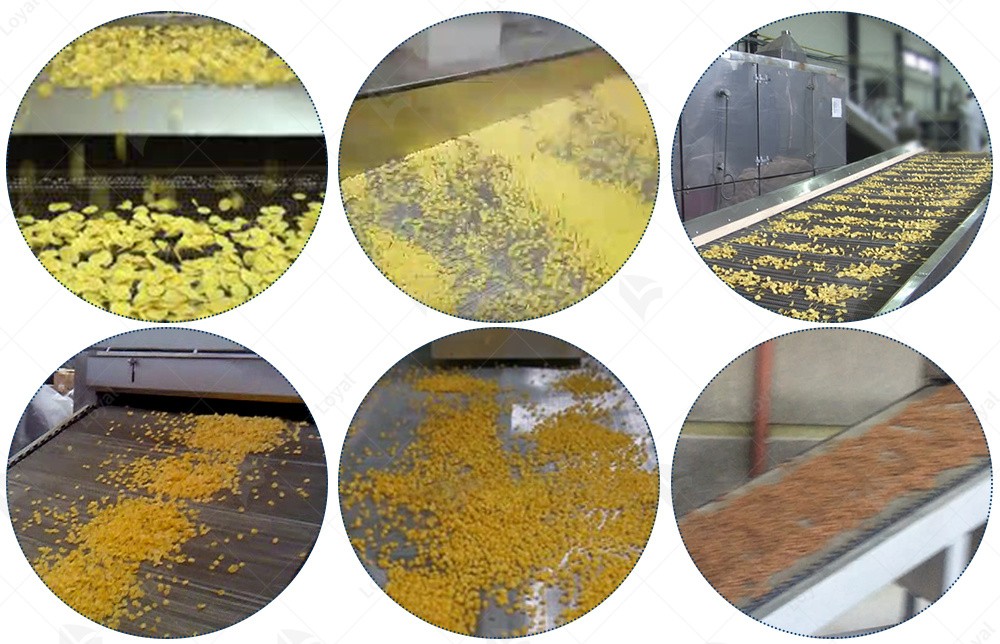
Operating Principles of Breakfast Cereal Machines
Breakfast cereal machines have revolutionized the food industry, particularly in the production of morning staples like cornflakes, granola, and oat clusters. These sophisticated pieces of equipment embody the pinnacle of industrial food processing technology, combining precision engineering with advanced automation to churn out millions of boxes of cereal each day.
Breakfast cereal machines are intricate systems comprising several key components, each playing a vital role in the manufacturing process. At the heart of these machines lies the mixing chamber, where raw ingredients such as grains, sugars, flavorings, and additives are blended in precise proportions. This chamber is equipped with state-of-the-art sensors and controls to ensure consistency and uniformity in the final product.
Once the ingredients are thoroughly mixed, they are fed into the extrusion system, where the magic of cereal shaping occurs. This system utilizes a combination of pressure, heat, and molds to form the cereal mixture into familiar shapes such as flakes, loops, or clusters. The extrusion process is meticulously calibrated to achieve the desired texture and crunchiness of the end product.
After shaping, the cereal undergoes a cooking or baking stage to impart flavor and enhance its nutritional profile. This step involves passing the cereal through ovens or toasting chambers, where it is subjected to precisely controlled temperatures and cooking times. These parameters are carefully adjusted based on the type of cereal being produced and consumer preferences.
Once cooked, the cereal moves on to the cooling and drying phase, where it is allowed to reach ambient temperature and lose any excess moisture. This is crucial for maintaining the crispness and shelf stability of the final product. Cooling and drying are typically achieved through a combination of air circulation and conveyor systems, ensuring efficient and uniform processing.
Finally, the finished cereal undergoes packaging and labeling before being dispatched to retailers and consumers worldwide. Modern breakfast cereal machines are equipped with high-speed packaging lines capable of handling a variety of packaging formats, including boxes, bags, and single-serve pouches. Advanced printing and labeling technologies ensure that each package is accurately labeled with nutritional information, expiration dates, and branding.
In conclusion, breakfast cereal machines represent the epitome of industrial food processing technology, employing advanced automation and precision engineering to produce the morning staples enjoyed by millions worldwide. Understanding the operating principles of these machines is essential for anyone involved in the food industry, from manufacturers to distributors and retailers.
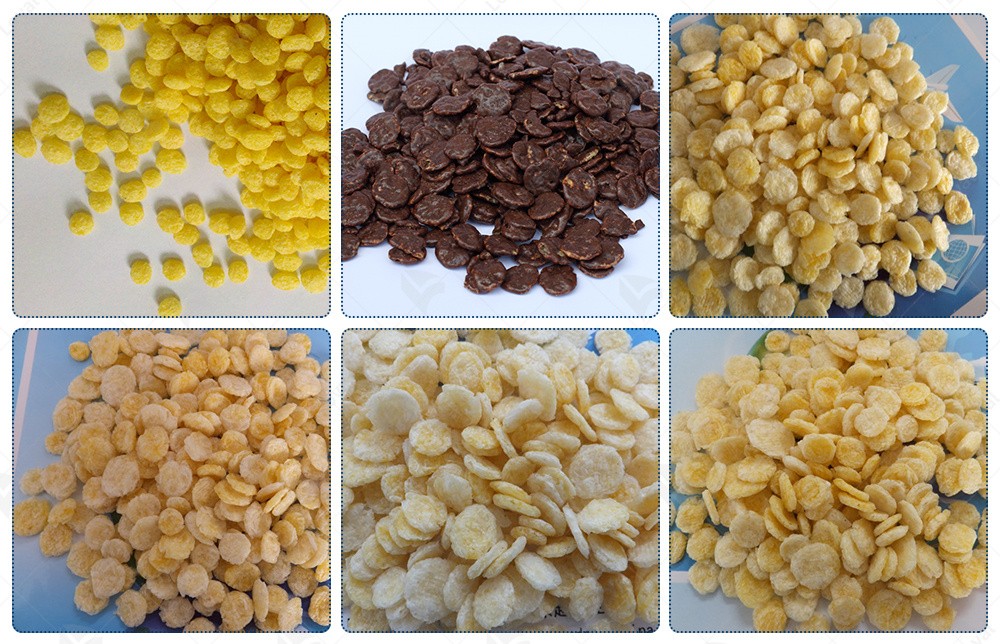
Applications of Breakfast Cereal Machines
Breakfast cereal machines have revolutionized the food industry in recent years, offering a wide range of applications across various sectors. These sophisticated machines are designed to automate the production process of breakfast cereals, ensuring efficiency, consistency, and quality. Let's delve into some of the key applications of breakfast cereal machines in 2024.
1. Industrial Scale Production:
One of the primary applications of breakfast cereal machines is in industrial-scale production facilities. These machines are equipped with advanced technology to handle large volumes of raw materials efficiently. From mixing ingredients to shaping, cooking, and packaging the final product, breakfast cereal machines streamline the entire production process, enabling manufacturers to meet the demands of mass markets.
2. Customization and Innovation:
Breakfast cereal machines offer manufacturers the flexibility to customize products according to consumer preferences. With adjustable settings and modular components, these machines can produce a wide variety of cereal shapes, flavors, and textures. Moreover, continuous innovation in machine design allows for the creation of novel cereal formulations, catering to evolving consumer trends and preferences.
3. Quality Control and Consistency:
Ensuring consistent quality is paramount in the food industry, and breakfast cereal machines play a crucial role in achieving this objective. These machines are equipped with precision control systems that monitor and regulate various parameters such as temperature, moisture content, and ingredient proportions throughout the production process. This ensures that every batch of cereal meets the highest standards of quality and taste.
4. Diversification of Product Offerings:
Breakfast cereal machines enable manufacturers to diversify their product offerings beyond traditional cereal flakes and loops. With the ability to incorporate a wide range of ingredients such as grains, nuts, fruits, and even functional additives like vitamins and minerals, these machines facilitate the creation of innovative cereal products that cater to niche markets and dietary preferences.
5. Food Service and Hospitality:
In addition to large-scale production facilities, breakfast cereal machines also find applications in the food service and hospitality industry. Hotels, restaurants, and catering services can use these machines to offer freshly made cereals to their guests, providing a convenient and nutritious breakfast option. Moreover, the ability to produce cereals on-demand reduces waste and ensures product freshness.
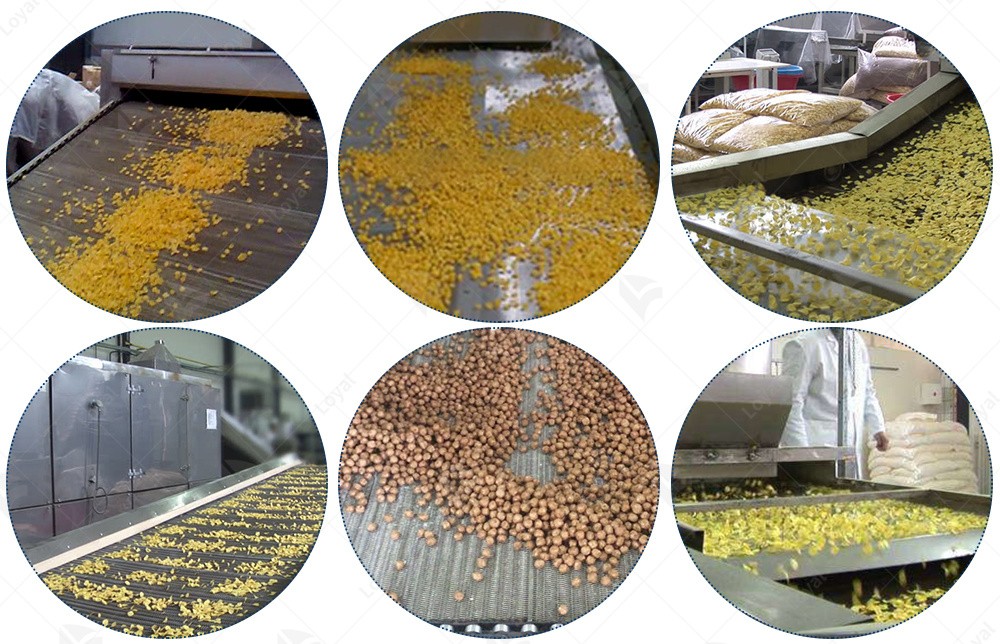
Advancements in Breakfast Cereal Machine Technology
In 2024, the breakfast cereal machine industry has witnessed significant advancements, revolutionizing the production process and meeting the evolving demands of consumers worldwide. These technological innovations have reshaped the landscape of breakfast cereal manufacturing, offering greater efficiency, precision, and versatility.
One of the key advancements in breakfast cereal machine technology is the integration of automated systems. These systems streamline the entire production process, from ingredient mixing to packaging, reducing manual labor and minimizing the risk of human error. Automated breakfast cereal machines are equipped with sophisticated sensors and controls that ensure consistent product quality and adherence to strict manufacturing standards.
Furthermore, advancements in breakfast cereal machine technology have led to the development of multifunctional equipment. These versatile machines are capable of producing a wide range of cereal products, including flakes, puffs, granola, and more. By offering increased flexibility, manufacturers can quickly adapt to changing consumer preferences and market trends, enhancing their competitiveness in the industry.
Another notable advancement is the incorporation of smart technology into breakfast cereal machines. These intelligent systems leverage data analytics and machine learning algorithms to optimize production processes and improve overall efficiency. By analyzing real-time data on ingredient usage, equipment performance, and production output, manufacturers can identify areas for optimization and implement proactive maintenance strategies to minimize downtime.
Additionally, advancements in materials and design have contributed to the development of breakfast cereal machines that are more durable, hygienic, and energy-efficient. Stainless steel construction and advanced sanitation features ensure compliance with stringent food safety regulations, while energy-saving technologies reduce operational costs and environmental impact.
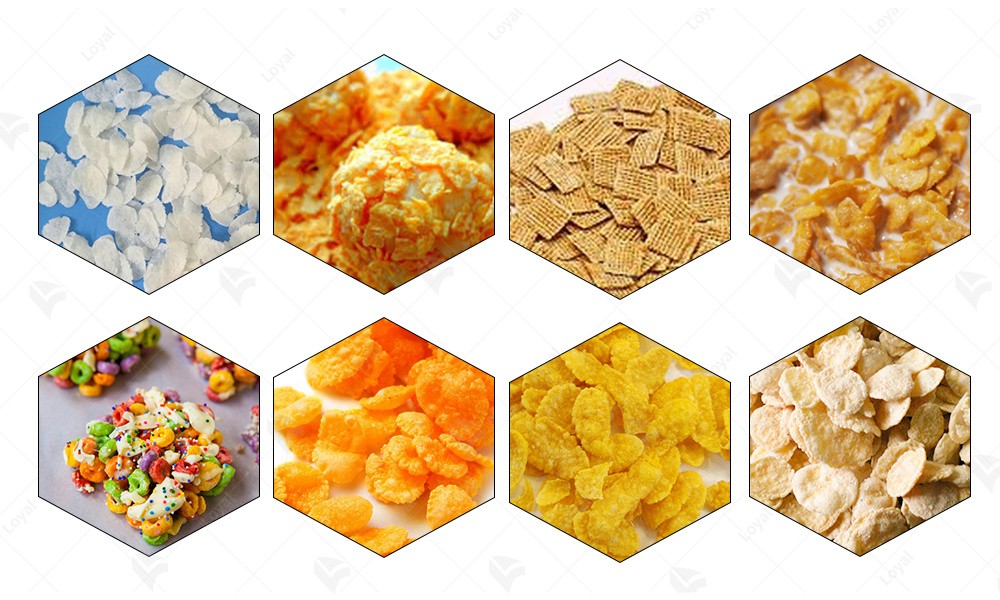
Future Trends and Developments in Breakfast Cereal Machine Technology
As we step into 2024, the landscape of breakfast cereal machine technology is poised for remarkable advancements. The convergence of cutting-edge engineering and innovative design principles is shaping the future of breakfast cereal production. Let's delve into the anticipated trends and developments in this realm.
Automation: One of the foremost trends revolutionizing breakfast cereal machine technology is automation. Manufacturers are increasingly incorporating advanced robotics and artificial intelligence into cereal production lines. This automation not only enhances efficiency but also ensures consistency in product quality. From ingredient mixing to packaging, automated systems streamline the entire process, minimizing human intervention and reducing the margin of error.
Customization: In response to evolving consumer preferences, breakfast cereal machine manufacturers are focusing on offering greater customization capabilities. Whether it's tailoring cereal shapes, flavors, or nutritional profiles, modern machines are equipped to accommodate diverse demands. Through intuitive interfaces and modular designs, operators can easily adjust parameters to create bespoke cereal products that resonate with target markets.
Sustainability: With sustainability emerging as a key concern across industries, breakfast cereal machine technology is undergoing a green revolution. Manufacturers are prioritizing eco-friendly materials, energy-efficient components, and waste-reduction strategies in machine design. Moreover, advancements in recycling and upcycling technologies are enabling the reuse of by-products generated during cereal production, fostering a more circular approach to manufacturing.
Integration of IoT: The integration of Internet of Things (IoT) capabilities is poised to redefine the operational landscape of breakfast cereal machines. By embedding sensors and connectivity features, manufacturers can remotely monitor equipment performance, preemptively identify maintenance needs, and optimize production workflows in real time. This proactive approach minimizes downtime, enhances productivity, and ensures uninterrupted supply chains.
Enhanced Food Safety: Maintaining stringent food safety standards is non-negotiable in the breakfast cereal industry. In line with this imperative, machine developers are implementing advanced sanitation protocols and hygienic design principles. From automated cleaning systems to antimicrobial materials, every aspect of the machine is engineered to uphold the highest standards of food safety, mitigating the risk of contamination and ensuring consumer wellbeing.
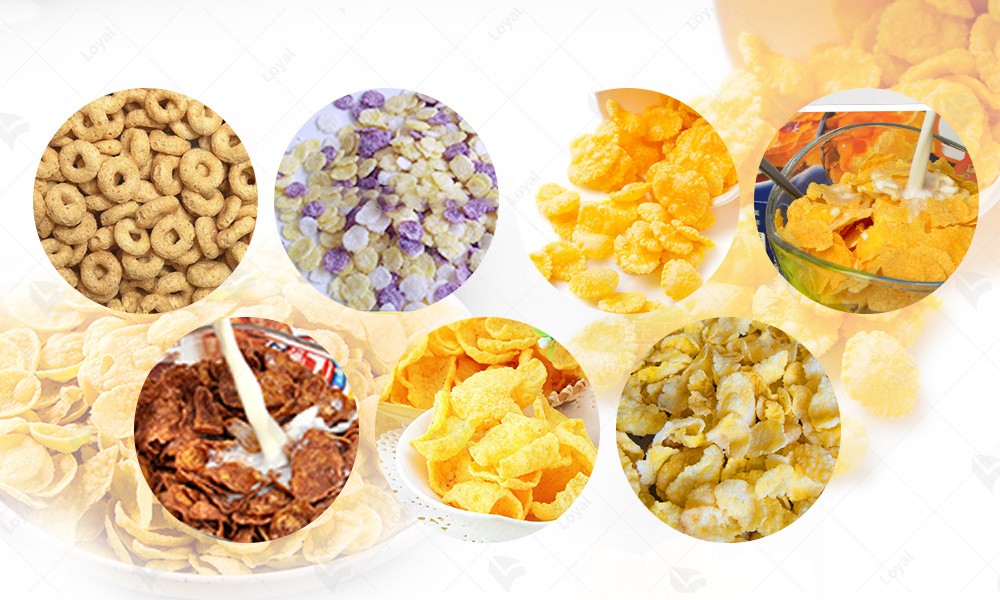
Maintenance of Breakfast Cereal Machines
Proper maintenance is crucial for extending the lifespan of breakfast cereal machines and preventing unexpected breakdowns. Here are some essential maintenance tasks:
1. Regular Cleaning: Regularly clean all components of the breakfast cereal machine to prevent the buildup of residue and debris, which can affect its performance. Pay special attention to areas prone to accumulation, such as the conveyor belts and mixing chambers.
2. Lubrication: Ensure that all moving parts are adequately lubricated to reduce friction and wear. Use food-grade lubricants suitable for use in food processing equipment to maintain hygiene standards.
3. Inspection of Wear and Tear: Periodically inspect the machine for any signs of wear and tear, such as damaged belts, worn-out gears, or loose fittings. Replace any worn or damaged parts promptly to prevent further damage to the machine.
4. Calibration: Regularly calibrate the machine to ensure accurate measurement and consistent product quality. Check the accuracy of sensors, temperature gauges, and other control mechanisms to maintain precision in the manufacturing process.
Troubleshooting Common Issues
Despite proper maintenance, breakfast cereal machines may encounter issues from time to time. Here are some common problems and their troubleshooting steps:
1. Uneven Product Texture: If the cereal produced has an uneven texture, check the consistency of ingredient mixing and the condition of the mixing blades. Adjust the mixing parameters and replace worn blades if necessary.
2. Jamming or Blockages: If the machine experiences frequent jamming or blockages, inspect the conveyor belts and augers for any obstructions. Clear any blockages and ensure that the material flow is smooth throughout the production process.
3. Temperature Fluctuations: Inconsistent temperature control can lead to variations in product quality. Check the heating elements and temperature sensors for proper functioning. Calibrate the temperature settings and replace faulty components as needed.
4. Electrical Issues: If the machine experiences electrical issues such as tripping breakers or erratic behavior, check the electrical connections and wiring for any damage or loose connections. Ensure that the power supply meets the machine's requirements and consult a qualified electrician if necessary.
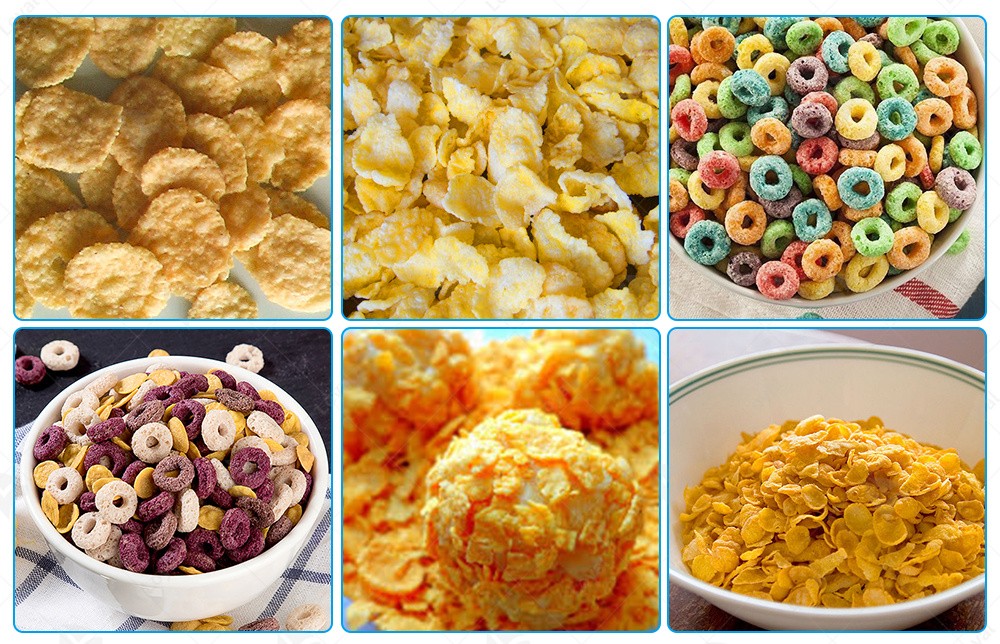
Reference materials
Here are some authoritative foreign websites for industrial food machinery-related literature references, along with their URLs:
1. Food Engineering Magazine
Website: [https://www.foodengineeringmag.com/]
2. Food Processing Magazine
Website: [https://www.foodprocessing.com/]
3. Institute of Food Technologists (IFT)
Website: [https://www.ift.org/]
4. American Society of Agricultural and Biological Engineers (ASABE)
Website: [https://www.asabe.org/]
5. European Federation of Food Science and Technology (EFFoST)
Website: [https://effost.org/]
These websites provide a wide range of information related to industrial food machinery, including the latest industry news, research findings, and technological trends, making them valuable resources for authoritative references and academic research.
 Commercial Japanese Panko Bread Crumb Grinder Machine
Commercial Japanese Panko Bread Crumb Grinder Machine Japanese Bread Crumbs Processing Line
Japanese Bread Crumbs Processing Line Automatic Cookies Making Machines
Automatic Cookies Making Machines Fully Automatic Biscuit Making Machines
Fully Automatic Biscuit Making Machines